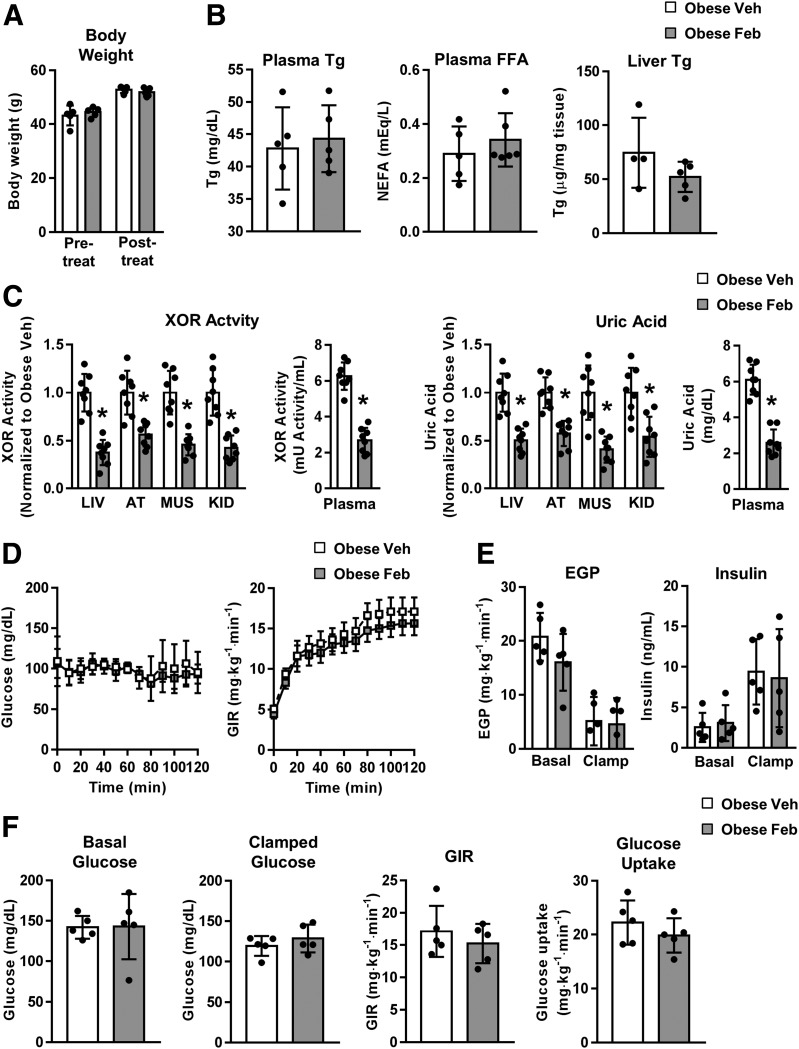Figure 4.
Pharmacologic inhibition of XOR activity reverses HyUA in obesity but does not impact insulin sensitivity or lipid homeostasis. Obesity was induced in WT mice through high-fat (60% kcal from fat) feeding for 13 weeks. Mice were then continued on the same diet and treated with febuxostat (50 mg/L in drinking water) or vehicle (standard drinking water) for seven additional weeks (weeks 14–20). A: Body weight pre- and post-treatment (n = 5). B: Plasma triglyceride (Tg) and FFA, and liver Tg at euthanasia (n = 4–5). C: Relative tissue and absolute plasma XOR activity (left panels); relative tissue and absolute plasma UA concentration (right panels) (n = 8). D–F: Data from euglycemic clamp studies (n = 5 all groups). D: Blood glucose and glucose infusion rate (GIR) time course. E: Endogenous glucose production (EGP) and plasma insulin. F: Basal and clamped glucose, GIR, and glucose uptake. AT, adipose tissue; Feb, febuxostat; KID, kidney; LIV, liver; MUS, muscle; NEFA, nonesterified fatty acid; Veh, vehicle. *P < 0.05 compared with obese vehicle.

